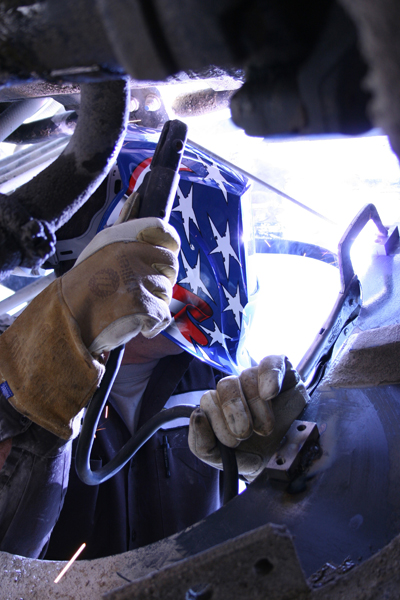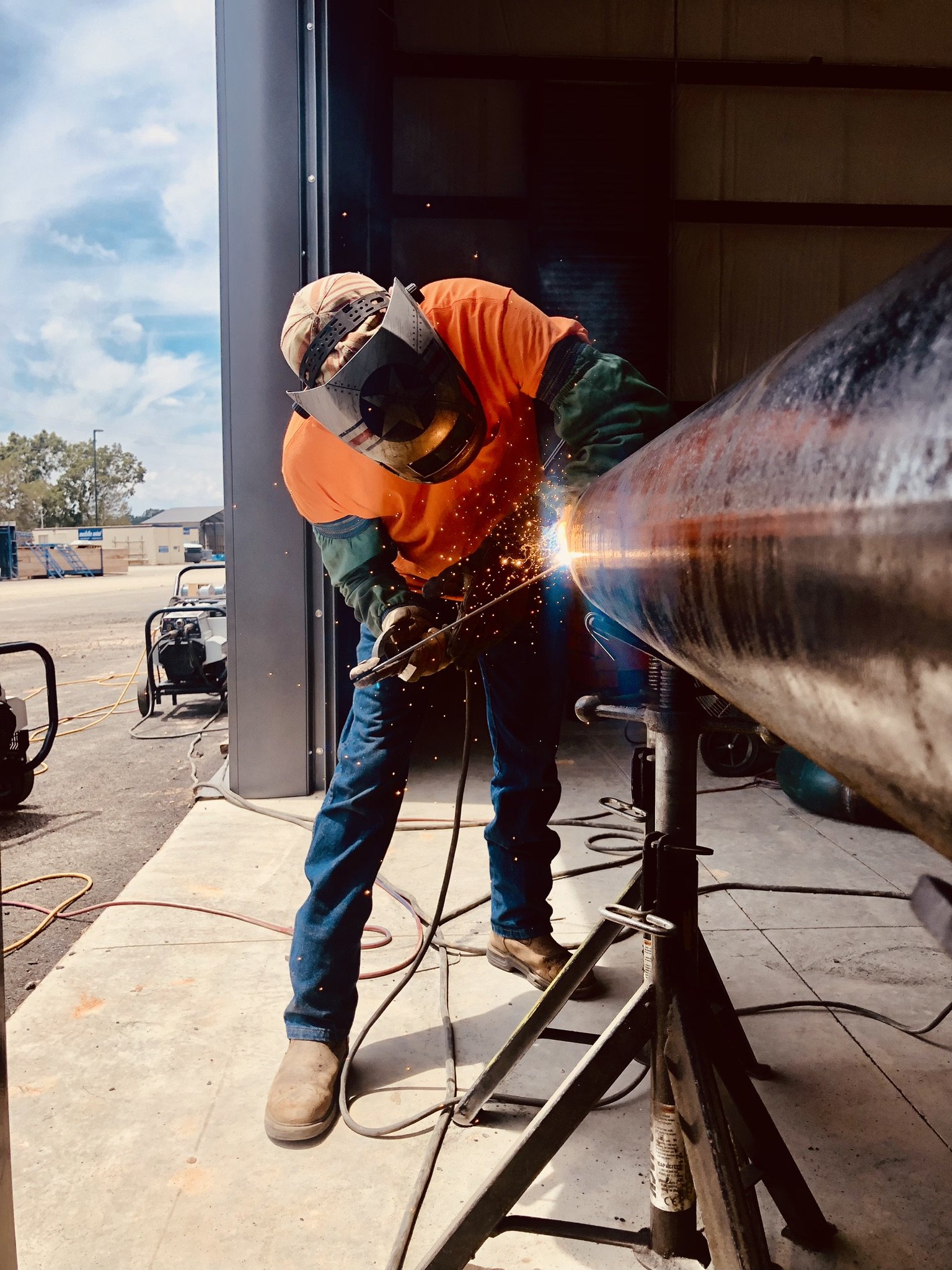Everything about Welding: Key Insights Into Techniques and Finest Practices for Success
Welding includes a selection of techniques, each suited for particular products and applications. Comprehending these methods, such as GMAW, SMAW, and TIG, is necessary for accomplishing ideal results. In addition, the right equipment and safety techniques can not be overlooked. As prep work and repairing play crucial functions in the welding procedure, grasping these elements can considerably improve the top quality of the last product. What are the vital factors that assure an effective weld?
Comprehending Different Welding Methods
Welding techniques encompass a variety of approaches, each suited to certain applications and materials. Among one of the most common methods are Gas Metal Arc Welding (GMAW), Secured Metal Arc Welding (SMAW), and Tungsten Inert Gas Welding (TIG) GMAW, additionally referred to as MIG welding, is preferred for its speed and flexibility, making it suitable for thin products. SMAW, or stick welding, is favored for its simpleness and efficiency in outside atmospheres, especially with thicker steels. TIG welding supplies precision and control, making it appropriate for detailed job and non-ferrous steels (Montana Mobile Welding and Repair Belgrade). Each strategy has its one-of-a-kind advantages and factors to consider, permitting welders to choose the ideal method based on the project's needs, product kind, and preferred results. Comprehending these methods is crucial for effective welding
Crucial Welding Devices and Devices
While different welding strategies call for particular abilities, the best tools and devices are equally crucial for attaining quality results. Necessary welding equipment includes welding devices, which differ relying on the method-- such as MIG, TIG, or stick welding. Safety gear, including handwear covers, helmets, and aprons, assurances safety and security and convenience during the procedure. Additionally, components and clamps aid protect products in position, ensuring precision in welds. Consumables like welding rods, wire, and shielding gas are additionally critical parts that influence the top quality of the weld. Moreover, devices such as mills and cutters help with surface prep work and post-weld completing, adding to a professional end result. Investing in high-quality devices ultimately improves the effectiveness and efficiency of welding jobs.
Safety And Security Practices in Welding
Proper safety practices are crucial in the welding market to secure employees from possible dangers. Welders have to put on ideal individual protective tools (PPE), consisting of safety helmets with proper shading, gloves, and flame-resistant clothing. Adequate ventilation is crucial to decrease exposure to hazardous fumes and gases produced during the welding process. Furthermore, workers ought to be learnt the right handling of welding equipment to stop mishaps. Fire precaution, such as keeping flammable products away from the welding area and having fire extinguishers conveniently available, are necessary. Regular inspections of equipment and offices can assist identify potential threats before they lead to accidents. By adhering to these security practices, welders can create a more secure working setting and minimize dangers associated with their profession.
Readying Products for Welding
Preparing products for welding is a crucial action that considerably influences the top quality and integrity of the end product (Belgrade Welding). Correct preparation entails cleaning the surface areas to eliminate impurities such as dust, corrosion, and oil, which can jeopardize the weld. Techniques such as grinding, fining sand, or making use of solvents are typically used to accomplish a tidy surface. Furthermore, guaranteeing that the products fit with each other snugly is important; spaces can result in weak welds. It's additionally essential to consider the placement and positioning of the components, as this will affect the ease of welding and the final outcome. Picking the proper filler product and making sure compatibility with the base metals is essential for attaining strong, sturdy welds.
Tips for Getting High-Quality Welds
Achieving high-quality welds requires interest to information and adherence to ideal methods throughout the welding procedure. Proper joint preparation is vital, making certain surface areas are tidy and free from contaminants. Picking the suitable filler product and welding method based on the base steels is essential for suitable bonding. Keeping regular traveling speed and angle while welding can stop issues and promote uniformity. In addition, regulating heat input is essential; excessive warmth can result in bending and weakened joints. If necessary, on a regular basis inspecting the welds during the process allows for immediate modifications. Utilizing ideal post-weld treatments, such as cleaning and tension relief, can improve the durability and stability of the weld, ultimately guaranteeing a successful end result.
Fixing Common Welding Issues
Welding commonly presents challenges that can affect the quality and stability of the end product. Typical concerns such as porosity, inconsistent weld beads, and overheating can emerge, each calling for certain repairing techniques. Recognizing these problems is important for welders to enhance their skills and attain excellent outcomes.
Porosity Issues Described
Porosity can commonly be forgotten, it continues to be an important problem in welding that can compromise the stability of a finished item. Porosity describes the existence of little gas pockets within the weld bead, which can lead and deteriorate the joint to premature failing. This trouble usually arises from contaminants, wetness, or improper protecting gas insurance coverage during the welding process. To mitigate porosity, welders need to verify that the base products are completely dry and clean, make use of suitable securing gases, and maintain constant welding specifications. On a regular basis examining the tools and setting can likewise assist determine prospective issues before they materialize in the weld. Dealing with porosity properly is crucial for attaining solid, durable welds that fulfill top quality criteria.

Inconsistent Weld Beads
Irregular weld grains can significantly affect the quality and toughness of a completed product. Various aspects add to this problem, including incorrect traveling rate, wrong amperage settings, and irregular electrode angles. When the welder relocates also rapidly, a grain might show up narrow and lack penetration, while relocating also gradually can trigger too much buildup. Additionally, using the wrong amperage can cause either damaging or too much spatter, both of which concession weld integrity. The welder's strategy, such as inconsistent lantern activity, can likewise bring about irregular grain appearance. To reduce these problems, welders need to combo welder concentrate on keeping steady, controlled movements and making certain appropriate equipment setups to accomplish harmony in their welds. Uniformity is crucial to attaining solid and trustworthy welds.
Overheating and Warping Issues
Too much warm throughout the welding process can bring about substantial overheating and contorting issues, affecting the structural integrity of the workpiece. These issues usually manifest as distortion, which can endanger alignment and fit-up, making more setting up testing. Factors contributing to overheating include the option of welding criteria, such as voltage and travel rate, in addition to the kind of product being bonded. To minimize these problems, welders need to keep consistent traveling rate and suitable warmth input while keeping track of the work surface temperature. In addition, preheating or post-weld warm therapy can assist ease tensions caused by rapid air conditioning - Fabrication. Normal inspection and adherence to ideal techniques are vital in avoiding overheating and ensuring the longevity and integrity of welded frameworks
Regularly Asked Concerns
What Are the Career Opportunities in the Welding Industry?
The welding market uses varied job possibilities, consisting of settings as welders, engineers, teachers, and assessors. Experts can work in production, construction, aerospace, and automotive industries, taking advantage of strong demand and competitive salaries in numerous duties.
Just How Can I Boost My Welding Rate Without Giving Up Top Quality?
To improve welding speed without sacrificing quality, one must practice effective methods, maintain equipment, optimize setups, and enhance hand-eye coordination. Routine training and looking for comments can additionally substantially add to accomplishing much faster, premium welds.
What Accreditations Are Available for Welders?
Various accreditations exist for welders, including those from the American Welding Culture (AWS), the National Center for Building Education And Learning and Research (NCCER), and numerous industry-specific organizations. These qualifications enhance employability and demonstrate ability efficiency.
Just How Does Welding Impact the Residences of Metals?
Welding affects the Resources residential properties of metals by changing their microstructure, which can lead to modifications in ductility, hardness, and stamina. Warmth input and cooling prices throughout the process substantially influence these product qualities.
Can I Bonded Dissimilar Metals Together?
